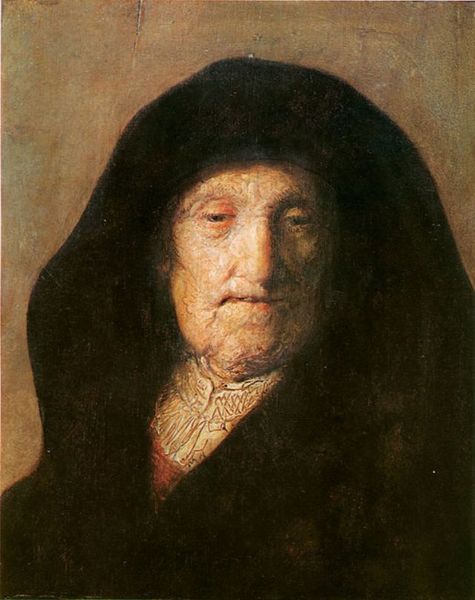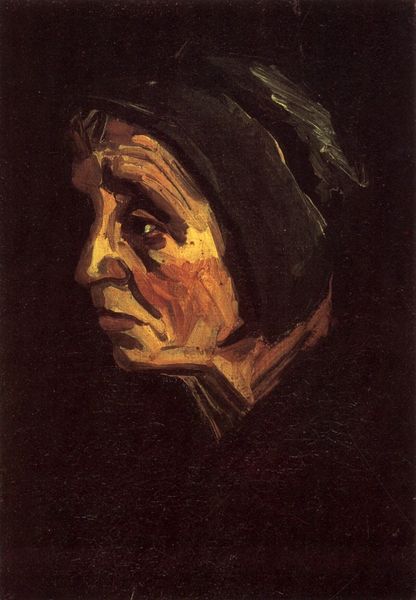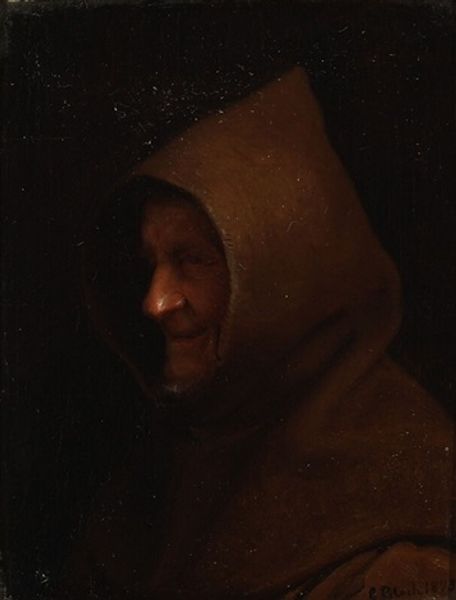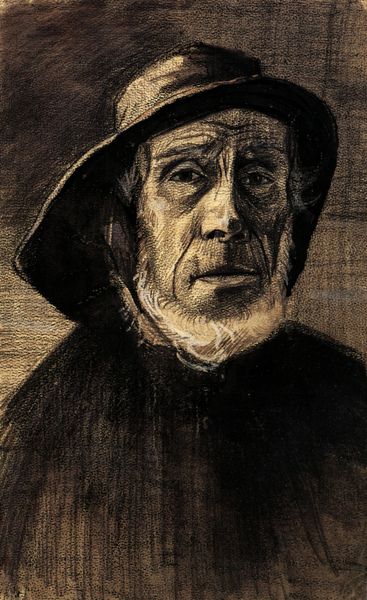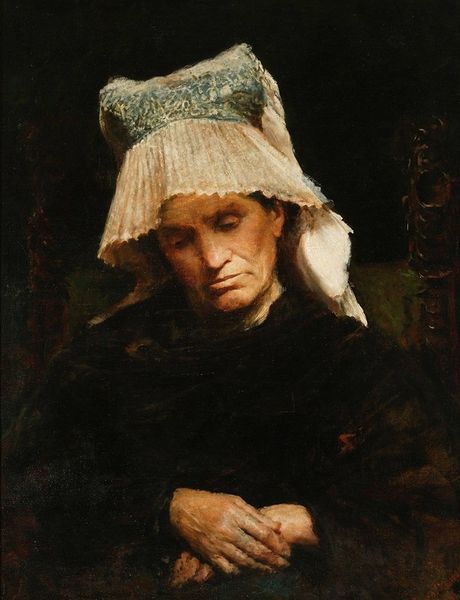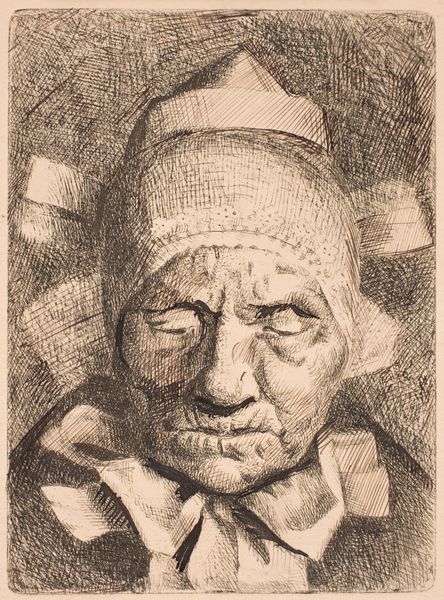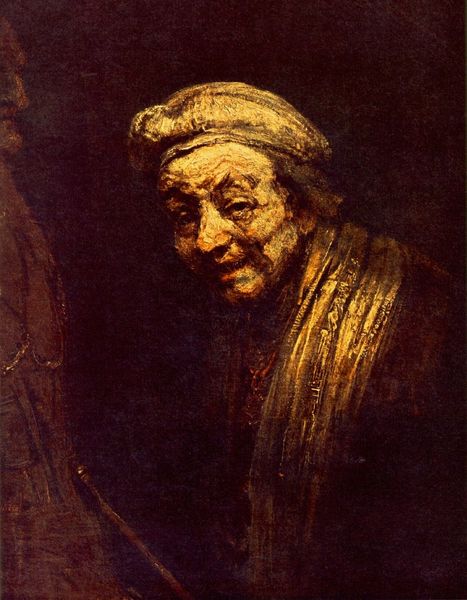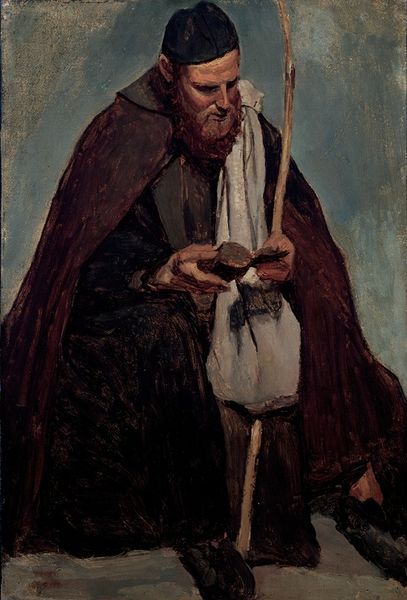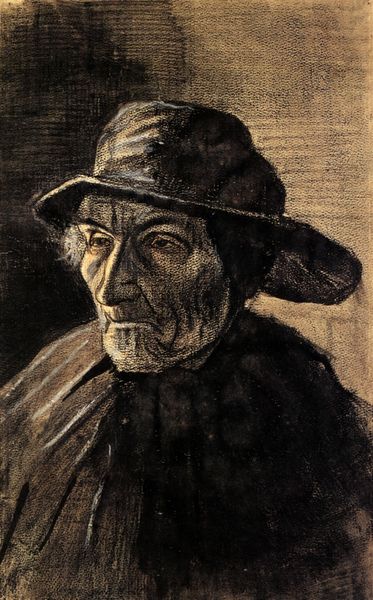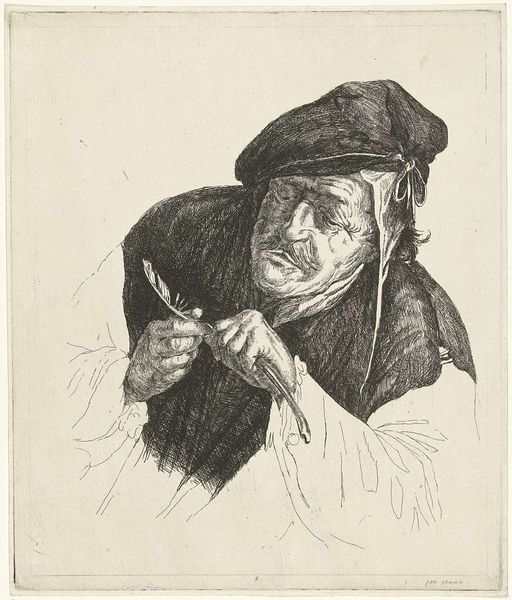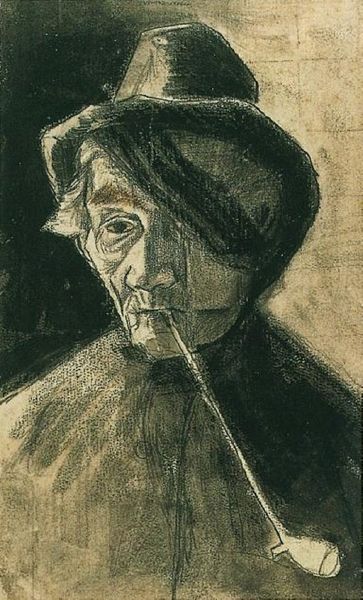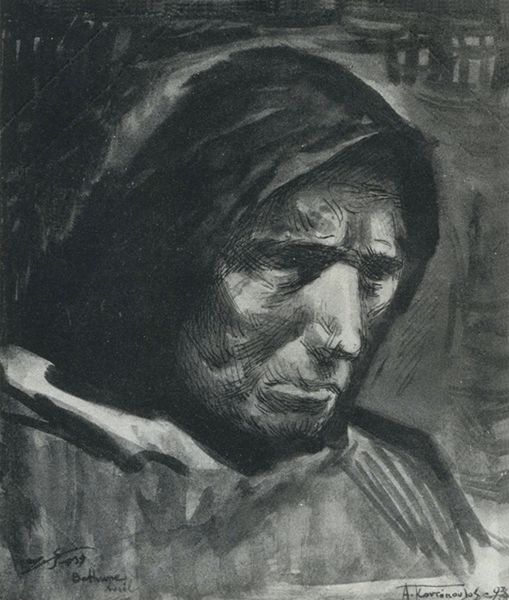
Copyright: Public domain
Curator: Welcome. Before us hangs Vasily Vereshchagin’s striking portrait from 1891, entitled "Beggar, Ninety Six Years Old." It’s an oil painting offering a close and unflinching look at old age and poverty. Editor: My first impression is one of quiet melancholy. The warm, brown background emphasizes the stark realities etched on this woman's face. It feels intimate, yet incredibly lonely. Curator: Indeed. Vereshchagin often engaged with themes of social injustice and the lives of marginalized individuals, reflecting the Realist movement's commitment to depicting everyday realities without idealization. Considering that the Russian empire contained so much poverty, I can see this as being aligned with his own background of dissent. Editor: Absolutely. This painting feels like a powerful commentary on the societal neglect of the elderly poor. Look at the minute detail of the wrinkles and lines – each tells a story of hardship, struggle, and resilience, challenging our notions of who deserves to be seen and valued. Curator: Her weathered face contrasts with the smooth background; Vereshchagin forces us to confront the harsh realities of aging and economic disadvantage, doesn’t he? Consider how exhibitions displaying artworks like this might have been seen at the time. They were quite provocative for some audiences! Editor: That's precisely why Vereshchagin's work remains relevant. The intersectional realities of poverty and aging, especially for women, are issues we are still grappling with today. The painting invites us to consider how power structures shape the lives and representations of those deemed invisible. Curator: Looking closer, it seems that the artist is concerned with not only reflecting these realities but prompting critical conversations about what it means to witness such scenes and the role institutions like art museums might play in social reform. Editor: I see "Beggar, Ninety Six Years Old" as a reminder to look beyond the surface, confront uncomfortable truths, and engage in conversations that advocate for a more just and equitable world for people living in vulnerable conditions. Art as a tool for social change is, perhaps, more necessary than ever. Curator: Yes. I'm left thinking about how history shapes our perceptions and how a single artwork can serve as both a mirror reflecting past struggles and a lens through which we can examine our present realities. Editor: For me, this piece reinforces art's responsibility to challenge power, amplify marginalized voices, and call us to action. The silent scream within that face stays with me.
Comments
No comments
Be the first to comment and join the conversation on the ultimate creative platform.
